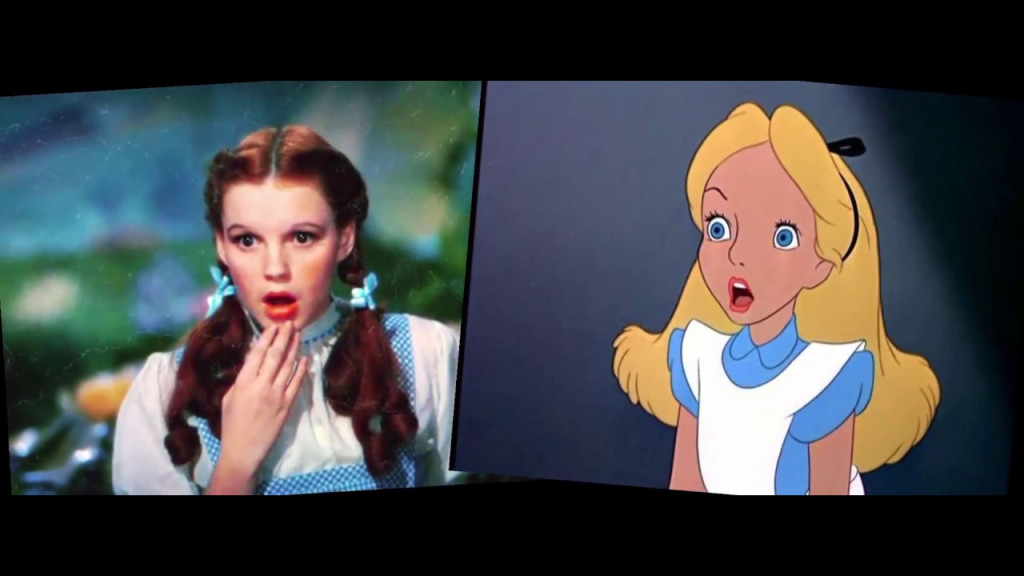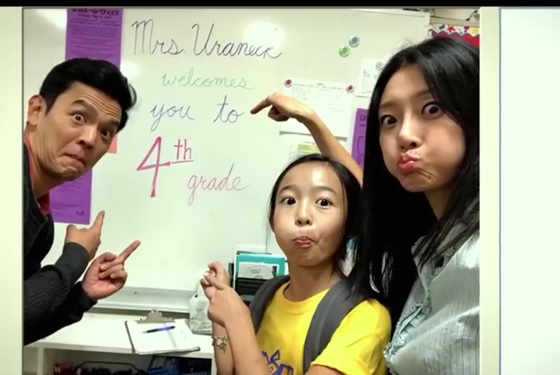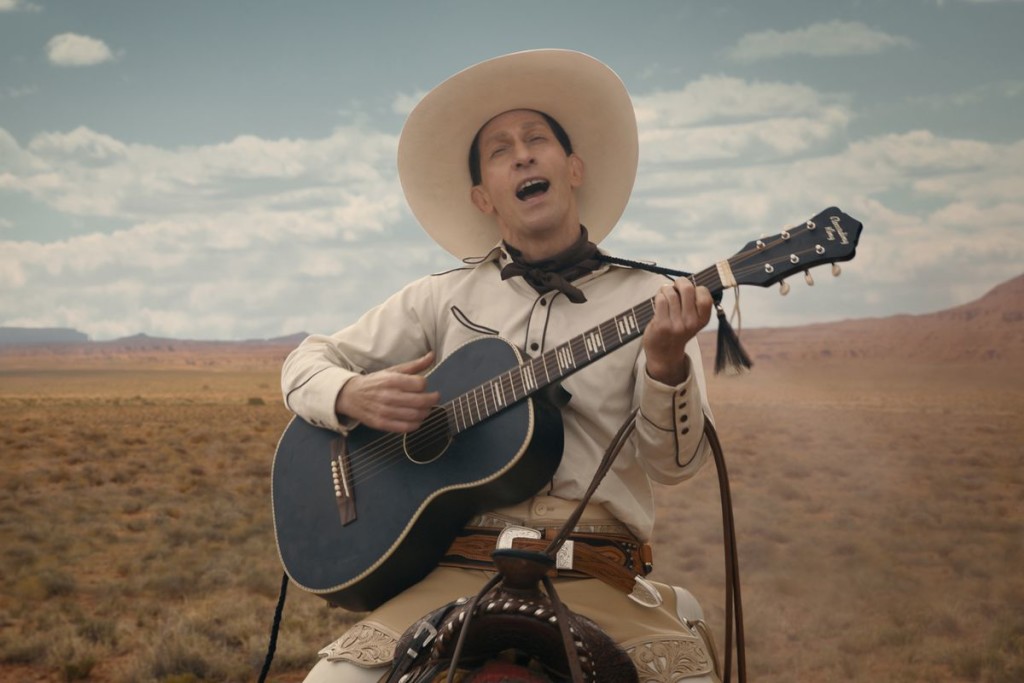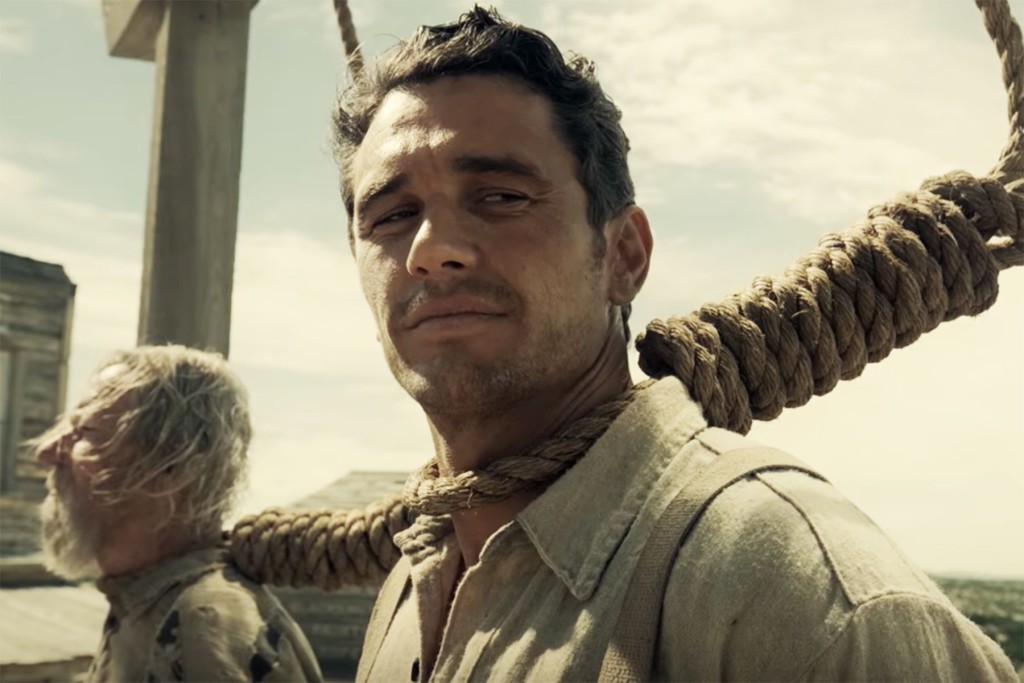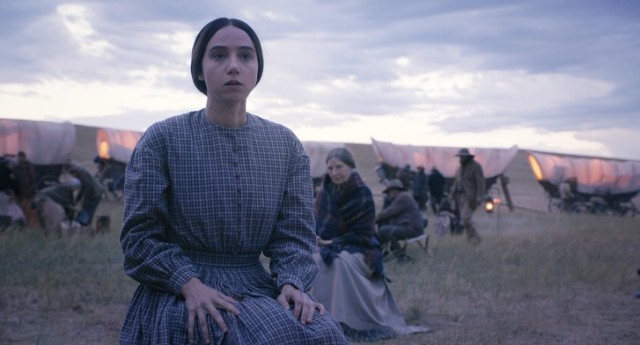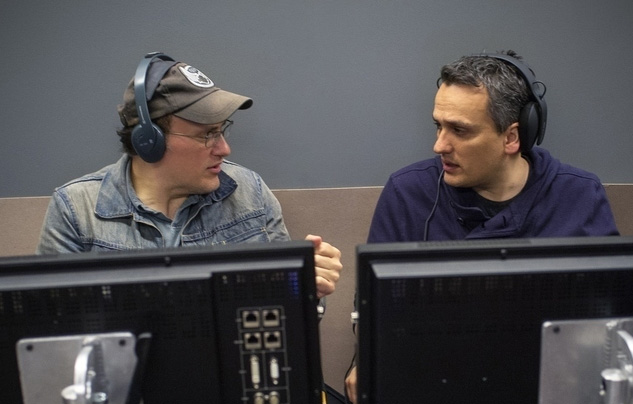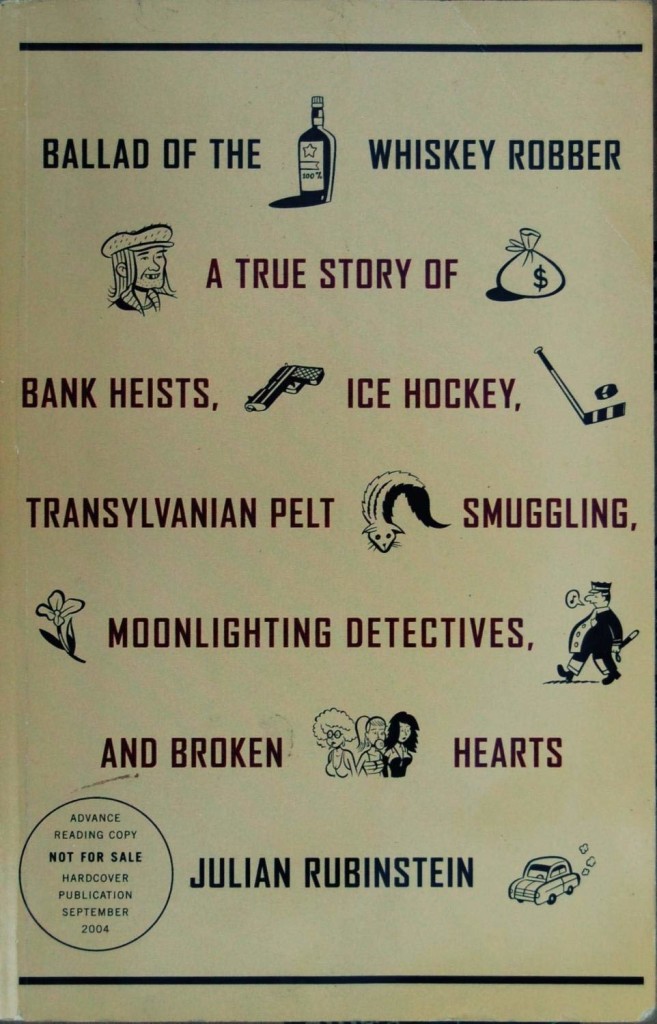Search Results for: the wall
Genre: True Story/Drama
Premise: This is the true story of Mathew Martoma, a hedge fund trader who many consider a Wall Street sacrificial lamb for the 2008 stock market collapse.
About: This is a highly ranked 2016 Black List script. It received 21 votes, placing it in that year’s top 10. The writer, Matt Fruchtman, doesn’t have any previous credits on the books, making this his breakthrough screenplay.
Writer: Matt Fruchtman
Details: 128 pages
I preach relentlessly about the importance of starting your script strong. So it kills me when a screenplay violates this simplest of simple rules.
Although I didn’t get into it, I knew yesterday’s script was in trouble the second I read the first scene – an exposition dump. You never. EVER. in any circumstance. open your script with an exposition dump. With Dorothy and Alice, the first scene was all about a moon stone and the rules of the different worlds and what had happened to Oz and what our hero had to do now. I see a mistake like that and I know there will be more mistakes to come. And there were. The script devolved into a paycheck for a Santa Monica special effects company.
But in the case of Dark Money, a script I ended up liking, I didn’t connect with the opening scene either. Or the scene after it. Or the scene after that. It took me a good 50 pages before I was pulled into the story. And I can tell you the exact moment where it happened. But first, let’s summarize the story.
It’s 2006. 32 year old Mathew Martoma, a handsome Indian-American, is wrapping up the biggest job interview of his life. He’s informed by Steve Cohen, the head honcho at SAC Capital, a billion dollar hedge fund, that he doesn’t have what it takes. But after Mathew leaves, the private investigator Steve hired to look into Mathew informs Steve that he doctored some of his grades to get into college. That convinces Steve that Mathew will do whatever it takes to win, so he calls him up and tells him he starts tomorrow.
Unfortunately, working with Steve is like having someone bang you over the head with a space heater 50 times a day. All Steve does is tell Mathew that he’s dumb and won’t make it here. If that’s not bad enough, Mathew learns that SAC employees making a 20% return on their trades (a full 12% above the market) are getting fired. The pressure to bring record-breaking returns to this company is enormous.
So Mathew is more than thrilled when his doctor wife tells him about a miracle Alzheimer’s drug that’s going into trials. Mathew befriends the elderly doctor whose paper led to the drug, Sid Gilman, and, as a result, gets regular updates on how the trials are going. When it looks like the medication is going to be a hit, he gets his boss, Steve, to go all in on it. If this pays off, he’ll make Steve more money than any other trader has made him.
But as the release of the drug nears, Sid informs Mathew that the latest set of trials were ugly. At the last second, Mathew informs Steve of this news, and Steve executes a slimy trader move whereby he “shorts” his stocks via “dark pooling.” This allows SAC to not only abandon the stock without anyone else noticing. But also, if the stock bombs, SAC will make an insane amount of money.
“Shorting,” is a morally reprehensible thing to do because you’re basically profiting off of everybody else’s misfortune. It turns out that this particular short occurs during the giant financial meltdown of 2008. So immediately afterwards, with the world’s biggest newspapers demanding culpability, the FBI needs to take people down. Enter BJ, a faux-hawked Korean FBI agent who has his sights set on Steve. However, Robert Mueller (yes, that Robert Mueller) tells him that you can’t put billionaires in prison. It’s impossible. Well then who the hell can we take down, BJ asks. It turns out Mathew, who committed insider trading, is the easiest target.
Mathew ends up getting 9 years in prison while Steve gets… well, I’ll let the closing title card tell you: “After paying the fine, Steve Cohen immediately purchased a $60 M Hamptons home and an $155 M Picasso. He was never charged criminally.” And this, my friends, is America!
So let’s get back to that opening scene. Why didn’t I like it? It wasn’t a bad scene, per se. It was a job interview. The stakes and tension are inherently high in job interview scenes so I was game. But the dialogue straddled the thin line between cool and try-hard, to the point where it became distracting. Being able to write showy dialogue authentically (Fruchtman: “They speak in a rapid-fire testosteronese, not really listening but preparing to counter-punch each other’s remarks.”) is such a fragile practice. Try too hard and we, the reader, begin focusing less on the characters and more on the writer writing them (“Say I put you in a time machine. Bit of an alternate universe. September 11th 2001. You come to work here. First plane hits the tower. 9:46 AM this time. What trades do you make as soon Allah Akhbar Airlines smashes into the North Pole of American finance?”). It’s a game where unless you’re a true master, it can backfire badly.
When I read a script, I want to disappear into the story. I don’t want to be reminded that someone’s writing it every couple pages. So I waded through the following scenes carrying a grudge. I kept waiting for the storyteller to disappear. Meanwhile, the script was feeling more and more like a poor man’s “The Big Short.” But then something happened. And here’s the big screenwriting lesson of the day. Fruchtman introduced a PROBLEM. Mathew had spent 30 pages staking his reputation and livelihood on the Alzheimer’s stock. So when he’s told that the medication is garbage and the stock is worthless, his entire world is flipped upside-down.
It isn’t just that a problem has arisen. It’s that it’s a BIG PROBLEM. One big problem can make a movie. And, indeed, the script gets 1000% better the second this problem arrives. Now, every scene requires a choice (for example, what does he tell his boss?), as opposed to focusing on the daily activities of too-cool-for-school stock brokers. And once Mathew makes the choice to short the stock and deceive the market, we know it’s only going to get worse from thre. Once you have a character in freefall, it’s hard to screw that up. The audience is going to want to see if they can get out of it.
Still, I thought Fruchtman could’ve gotten so much more out of this story. The script kind of makes Mathew the bad guy. And make no mistake, he did break the law. But it should’ve been clearer that he was the fall guy. The question everyone wanted answered in 2008 was, why are these billionaires allowed to gamble our money away then get bailed out? More focus needed to be placed on taking Steve down and explaining the intricate web of reasons why he, and others like him, couldn’t be arrested. These movies are about sending audiences out in a rage so that they demand change. But the ending to Dark Money was just sad.
We’ll see if Dark Money gets made. Working against it is the fact that the best movie ever about this subject matter already came out (The Big Short). Studios may wonder why even bother. Then again, if Hollywood’s Diversity Movement needs another feather in its cap, two of the three main characters in Dark Money are Indian and Korean. And ALL of the characters in this story are interesting. It’d be an actor’s paradise. We’ll see what happens. In the meantime, if you want to read something good. Dark Money will do.
[ ] What the hell did I just read?
[ ] wasn’t for me
[xx] worth the read
[ ] impressive
[ ] genius
What I learned: The “freefall” plot device. Put your character in freefall and the script will write itself. One of the best movies of all time, Fargo, is great precisely because it follows a character, Jerry Lundergarden, in freefall.
As we anxiously await the end of the year screenwriting lists, we turn to one of Hollywood’s go-to moves – free IP!
Genre: Fantasy
Premise: Dorothy Gale and Alice meet in a home for those having nightmares and embark on a journey to save the imaginations of the world.
About: This script made last year’s Black List. The script was involved in a bidding war and eventually got gobbled up by Netflix. This is an intriguing purchase in that this film will cost at least 120 million dollars (probably more). It’s also an indication that Netflix is now poaching on film studios’ favorite material – old IP. The writer, Justin Merz, is an English teacher.
Writer: Justin Merz (based on the characters created by L. Frank Baum, Lewis Caroll, and J.M. Barrie)
Details: 114 pages
When in doubt about what to write next, turn to the classics.
Cain and Abel, Shakespeare, Wizard of Oz, Frankenstein, The Count of Monte Cristo, dare I say ROBIN HOOD(???) – I just did. I said Robin Hood. But it’s true. Hollywood never tires of these stories because they tick two of the most important boxes in production. They are KNOWN TO EVERYONE and they are FREE TO LICENSE. That’s profit on both ends, baby. And yet, Hollywood’s been screwing up the formula. They’ve got the Robin Hood Problem. The Pan Debacle. The Frankenstein Atrocity. And when was the last time someone gave us a good Shakespeare adaptation? It’s been so long, it’s starting to feel like it was back when Shakey was alive!
I suspect that there are so many options bouncing around our field of vision these days that if we whiff even a HINT of dust on a movie, we’re out. “We’ve seen this already!” we scream to our glowing portals. Only for the studios to be confused when we don’t show up to their latest CGI debacle. The trick to writing in this genre is you have to make it feel new. That’s the only way to wipe the dust off. And hence I give you Dorothy & Alice, a script that will attempt to reinvent a story we know by combining TWO tales into one. Let’s see if it works…
It’s 1901 and an 18 year-old Dorothy keeps having nightmares where she tries to get back to Oz but can’t find it. UNTIL NOW. Dorothy digs under some dirt, finds the yellow brick road, which leads her to someone named Ozra – protector of the Emerald Tower – who informs her that she needs to find something called THE DREAM STONE stat! If she doesn’t, it’s likely that the Red Prince will. And if he gets the stone back to his mommy, it will allow her to destroy any reality – Oz, Wonderland, Neverland, even Earth!
Dorothy’s cool uncle (her aunt has since died) believes that her crazy dreams are real and sets her up with a dream specialist who lives all the way out in London. Once there, Dorothy stays at a special hospital for girls who have wild dreams like hers. She’s thrilled when the head doctor, Dr. Rose, believes that Oz exists. But the good vibes don’t last. A crazed former patient named Alice pops in and recruits her to come to Wonderland where it’s believed the Dream Stone is located.
When Dr. Rose learns that the girls have escaped, she sends two of her men to neighboring Neverland through a Matrix-like contraption that allows people to jump into the dream world at will. Dorthy and Alice travel across the magnificent Wonderland, only to get picked up by Princess Tiger Lilly, who whisks them off to Neverland. Once in Neverland, the Red Queen arrives looking for the dream stone and, wouldn’t you know it, the Red Queen is Dr. Rose!!! Spoiler alert. From there it’s a battle to secure the dream stone and the good guys win and it’s all happily ever after………. or is it?
So here’s the deal.
I can’t stand scripts that are one giant CGI fest. For starters, when it comes to worlds this unique, it’s hard to imagine what we’re looking at based solely on words on a page. But, more importantly, when you write these movies, you risk slipping into CGI dependency, where the answer to your story problem becomes an enormous set piece on top of a giant rose with 50 foot monsters attempting to eat your hero.
The irony of a scene like this is that it’s both imaginative and unimaginative all at once. Sure, we’ve never seen it before. But we’ve seen enough stuff like it where it isn’t interesting. It’s much harder, and more rewarding, to come up with an emotionally resonant character-driven scene. But the more you fall into “GIANT CGI MOVIE MINDSET,” the less likely you are to go with that option.
I actually liked how this script began because it was character driven. I thought it was a really interesting question the author was posing – What is your life like three years after going through an incredible experience that nobody else believes you went through? Imagine how frustrating that must be. And when you add the death of Auntie Em, it makes Dorothy’s situation even more sympathetic.
I WANTED TO WATCH THAT MOVIE.
I even liked it once we got London. Again, it was because the writer was forced to write real things. Just to be clear about what that means – I believe that readers are attracted to things that they can relate to in their own lives. That’s a big reason why Harry Potter is so popular. It mirrored the school experience everyone goes through. When we get to London in Dorothy and Alice, we’re still dealing with real world things like settling into a new place and meeting new people.
Once we get to Wonderland, all of that goes out the window. It’s one CGI experience after another. And while I understand that a lot of this is inherent to the concept (it’s called WONDER-land, so there has to be plenty of wonder), that doesn’t mean you throw out the tool that helps the reader relate to what’s going on. You can ALWAYS use that tool, no matter how insane the world you’re writing about is. In Raiders, it’s the broken relationship between Indiana and Marion. Who hasn’t had to navigate a broken relationship before? It’s the thing that reminds us these people aren’t that different from ourselves.
I don’t know what the flaw or conflict or relationship issue any character here is going through. All I knew was that every ten pages, there’d be a new creature. That’s lazy. Not engaging.
Something that amazes me every time I think about it is the climax of The Matrix. It’s the epitome of the argument that character is more important than spectacle. The climax of The Matrix takes place IN A HALLWAY. The background is WALLPAPER. Think about that for a moment. That’s how minimalist the movie is. And we’re talking about a film that pioneered special effects. Yet the final battle is as simple as it can get.
I try and tell every writer I can about this scene because it’s more than just an example. It’s a way of thinking. When you’re struggling with your script, the solution is rarely to come up with the best action or chase or explosion scene ever. But rather, it’s to explore who your character is and how you can use this experience they’re in to test them.
A lot of you are probably confused now because I’ve gone on this whole rant yet Dorothy And Alice sold to Netflix. So why did it sell? I don’t know. But I can hypothesize. My guess would be that Netflix wants to get into the IP game. And going with free well-known IP is one of the easiest ways to do it. The writer DID come up with a new take, which is to combine two worlds. I suspect that that also had something to do with it, as it gives them unlimited options for sequels if the film does well. And the script is written well. I’m not saying this script is bad by any means. It provides spectacle if that’s what you’re looking for. My argument is that this stuff doesn’t resonate unless you prioritize character over spectacle. And I didn’t see that here.
[ ] What the hell did I just read?
[x] wasn’t for me
[ ] worth the read
[ ] impressive
[ ] genius
What I learned: As a counter-argument to my review, I will admit that these kinds of scripts are good for writers who want to show that they have the ability to write big set-piece laden Hollywood screenplays. The scripts themselves don’t often sell. But if you can be consistently imaginative, and write even two REALLY INVENTIVE set pieces, that could get you an assignment on one of these effects-heavy projects. — HOWEVER, if you do that AND YOU NAIL THE CHARACTERS, you will be desired by every major studio in town.
When I heard that Searching was a good movie, I was skeptical. A feature-length mystery told on a computer? Stuff like this always sounds good in theory. But when you get into the writing process, the scale of just how difficult it is becomes apparent. Even the simplest moments can be hard to work out. For example, let’s say your hero has to go to someone’s house and confront him. In a normal movie, you just write the scene. But in a gimmicky computer-only movie, you must construct the whole thing through this artificial lens of “reality” seen through the eyes of computers. So what’s your hero going to do? Show up with an iphone in his hand and record the whole thing himself? Why would he do that?
One of the things I’ve become extremely appreciative of in screenwriting over the years is authenticity. As long as a scene feels genuine and truthful, I’m invested. The second the writer starts constructing artificial reasoning into the plot beats, I check out. This is one of the reasons found-footage died. The grandfather of the genre, Blair Witch, made sense in that the group was documenting their search for a legend. But as found footage was forced to get bigger, writers had to work harder to justify why people would be holding cameras in situations. I mean, if you’re writing the found footage version of Die Hard, why would John McClane be holding a camera up to tape Hans while Hans held John’s wife hostage? Yet these were the kinds of scenarios found footage was asking us to buy into.
So I was shocked that Searching not only made all of its artificial beats plausible, but used its unique medium to improve those beats. There’s a moment in the film where the dad is convinced one of his daughter’s friends is responsible, so he confronts him at a movie theater and punches him in the face. Again, you can’t just show this scene like you would in a traditional movie. So, instead, we see the scene through a teenager at the scene who recorded it on their phone and uploaded it to Youtube (“Crazy Dad Theater Attack”). But what’s really amazing about this movie is that it’s got the tightest screenplay I’ve seen all year. There isn’t a single wasted moment. And what’s most surprising is that despite its cutthroat pacing, it still manages to pack an emotional wallop. Amazing character development AND great plotting? How often do we see that these days? Here are 10 screenwriting lessons to take away from Searching…
WARNING: LOTS OF SPOILERS BELOW (Searching is available to rent. I suggest you watch it before reading the below tips)
1) A little emotion early can go a long way late – A lot of people will leave this movie talking about its unique form of storytelling. But Searching’s secret sauce actually occurs during its first five minutes. It’s here where we see, through pictures, video and e-mail, how David loses his wife (and Margot, her mother) to a two year battle with cancer. Searching would’ve been a decent film without this scene. But it becomes a great one with it. Connecting these two through that devastating loss makes us root a million times harder for them to reunite.
2) When writing a mystery, create a character that the audience is convinced did it, then later on, clear that person – This advice is as old as the mystery, but it still works great. Writers Aneesh Chaganty and Sev Ohanian make sure to construct the brother in such a way where we know he did it. Hell, I was 90% sure he did it. If you can successfully trick the audience into believing this, later on, when the character is cleared, it leaves us floating in space, unsure of everything we thought we knew. As a reader/viewer, that’s exhilarating. Because now anyone could be the killer. And we have to read on to find out who that is.
3) The sweet spot for an inciting incident is page 15 – The “inciting incident” is when the official “problem” arrives, the thing that turns your hero’s life upside-down. In Searching, that’s when Margot goes missing. And it happens at exactly the 15 minute mark. You can certainly have your inciting incident occur sooner. Some writers put it as early as page 1 (10 Cloverfield Lane would be an example). But the reason page 15 works best is that it gives you 15 pages to establish your characters. This is important because why would we care about someone’s problem if we don’t know anything about them?
4) In mysteries, you need a, “Okay, here’s what I have so far” character – In a mystery, your hero will be coming across a lot of information. It’s important then, that every once in awhile, they share where they’re at with the reader. The best way to do this is to create a character specifically designed to convey that information – the “Okay, here’s what I have so far” character. In Searching, that character is the brother. David periodically checks in with him via Facetime to tell him (and by association us) everything he’s got, as well as get feedback on what he should do next.
5) Create mini-movies within the movie – A script can seem endless when looked at from afar. How does one come up with 100 straight minutes of a guy looking for his daughter? You come up with it by chopping your script down into smaller goal-driven movies, then playing those mini-movies out for 10-15 minutes at a time. After David connects with Detective Vick, one of the first things she says is, “I need to know everything I can about Margot’s friends. Can you help me with that?” Bam: Just like that, we have a mini-movie. The next 10 minutes are dedicated to David calling and talking to Margot’s friends, trying to learn everything he can about them and how they’re associated with Margot. Amateur screenwriters don’t know how to do this, which is why their scripts feel so scattershot and unfocused.
6) Position the real killer early on as a hot suspect, then clear them – I actually learned this by watching Investigation ID shows. What you do is you focus on a hot suspect. Here, it’s Fish_N_Chips, a girl Margot talks to online a lot, but who she’s never met in real life. David goes through their YouCast archives, and the girl definitely seems suspicious. However, when Detective Vick goes to check her out, she comes back with the frustrating news that the girl has an airtight alibi. — But here’s the trick to making this work. By writing the person off so early, we forget about them. That way, when they reemerge late, we have a big “oohhhhh yeahhhhh” reaction due to the fact that we knew, just KNEW, that that girl was suspicious. This is so much better than what lazy writers pull – which is to pluck a random killer out of thin air at the last second.
7) Exploit what’s unique about your story – One of the first things you should ask yourself when you’re writing something is, “What’s unique about my story?” Once you know the answer, you can look for ways to exploit it. Since a lot of Searching takes place via text messages, it allows the writers to occasionally get inside David’s head via deleted messages. David will want to say something… “Your mom would be proud.” Which we see him write out. But then he changes his mind and deletes the text before sending it. It’s this clever little way to let us know what the hero is thinking.
8) Be clever in how you reveal exposition – One of the easiest ways to determine where a screenwriter is in their journey is to see how they deal with exposition. The more on-the-nose, overwritten, and dialogue-driven exposition is, the newer the writer. The more clever the exposition is exposed, the more advanced they are. Searching has one of the best uses of exposition I’ve seen all year. At one point, David must go into his wife’s old computer profile to find information about Margot. He opens it up and the first thing he sees is a pop-up: “You have not run Norton Anti-Virus in 694 days.” And just like that, we know how long his wife has been dead.
9) Killers working together give you a huge advantage over the reader – If you have two killers working together, it’s way easier to throw readers off the scent. And since tricking a reader these days is super-hard, the dual-killer setup can be a secret weapon. What we eventually learn in Searching is that Detective Vick’s son is the “killer.” Therefore, she’s trying to cover up what he did. Remember Fish_N_Chips? The early primary suspect? It turns out that was Detective Vick’s son. Because Chaganty and Ohanian were using a two-killer setup, they were able to have Detective Vick “visit” Fish_N_Chips and confirm that “she” had an alibi. Without the two-killer setup, explaining why Fish_N_Chips was let go early would’ve been impossible.
10) Make hard-to-believe plot points easier to believe via set-ups – In almost every screenplay, there will be a few plot points that are hard sells. The best way to deal with these is to SET THEM UP EARLY ON. If we feel like something’s already been established, we’ll be more likely to go with it. Searching has a hard-to-believe plot point in its third act – a live-cast of Margot’s funeral. Aneesh Chaganty and Sev Ohanian take care of this by having the Live Cast company contact David earlier in the script, when his missing daughter story has gone national. They’re basically a business looking to make a sale. David tells them to fuck off. “SHE’S NOT DEAD!” More importantly, the brief interaction makes the reemergence of the Live Cast more believable in the third act.
The Coens remind us why they’re two of the best screenwriters of all time.
Genre: Drama/Western/Dark Comedy
Premise: (from IMDB) An anthology film comprised of six stories, each dealing with a different aspect of life in the Old West.
About: It’s been eight years since the Coen Brothers’ last hit (True Grit). Since then they’ve hit us with the hard to like Llewyn Davis, then cast George Clooney at his most muggiest to give us the messy waste of time, Hail Caesar. Perhaps the Coens knew they needed to stretch their creative muscles and try something new. Which is why they went to Netflix. Streaming didn’t require anything resembling a three-act structure, and they went all in with that freedom, giving us six short vignettes as opposed to one giant movie.
Writers: Joel and Ethan Coen
Details: 2 hrs and 12 minutes
It isn’t a stretch to say that while the Coens are technically living in the year 2018, spiritually they’re living in, like, 1870 or something. So it’s apropos that their latest film is set in the Old West. I have to admit, I’ve lost a lot of faith in the Coens recently. I thought Llewyn Davis was one of the most miserable characters ever conceived. If the U.S. military ever wants to build a weapon that injects depression into its target, all they need to do is show their enemies that film. But with today’s review, I’m happy to say that the Coens aren’t just back. They’re back with a vengeance.
The Ballad of Buster Scruggs isn’t a single narrative. It’s six separate narratives, all set in the same universe of the Old West. The first follows Buster, an oddball outlaw who enjoys talking directly to the audience, using his impressive shooting skills to dust his adversaries, then joyfully singing about it. We watch Buster kill a couple of local tough guys before finally meeting his equal. Will this man, who is also strong with song, be the end of Buster?
The second vignette is Cowboy James Franco robbing a bank. After failing to do so, he’s strung up to a tree to be hung by the local sheriff. But when Comanches come galloping in and kill the sheriff and his gang, Cowboy James Franco is left at his horse’s mercy. Should the horse move too far from the tree, James will fall from the saddle and choke to death.
Vignette three follows a broken down drunk played by Liam Neeson who makes his living wheeling around a performer with no arms or legs. The performer recites high-brow material, such as poems about Cain and Abel, and while at first, he kills it, every city they visit, his audience gets smaller and smaller. Liam Neeson realizes he has to find a new act if he’s going to survive. But then what to do with the performer, who’s completely dependent on him?
The fourth film follows an old failed prospector who finds a stream in a picturesque valley. He sets up shop and begins sifting for gold. Weeks go by until finally, shockingly, he finds it. He hops down into the hole he’s dug to get a closer look, only to be shot in the back by a cowboy who’d been watching him this whole time, waiting for him to do the work so he could could glide in and collect the gold effort free. But maybe our prospector is more resilient than we first thought.
The fifth film introduces us to Alice, who’s to be married to a friend of her brother’s in Oregon. The siblings lead a caravan down the Oregon Trail, but, on the way, her brother dies. After burying him, we learn that Alice’s brother made an arrangement with the caravan’s leader to pay him $400 for the job. The only problem is that Alice can’t find the money. As each day passes, she dreads confessing to the man that he’s doing all of this for nothing.
The final film follows a group of five people in a stage coach that is carrying a mysterious dead body on its roof. The five pontificate about life, interjecting the conversation with the occasional song. Eventually, we learn that the owners of the stage coach are bounty hunters.
Look, I get it. Sitting down to watch a Coen Brothers film isn’t like sitting down to watch a Marvel movie, a horror flick, or even a biopic. It requires a certain level of mental commitment that can be agitating in this day and age. You have to put yourself in a state of – gasp – concentration. Some people don’t want to do that. And that’s okay. I’m the same way with movies like Call Me By Your Name and Ladybird. I know I’m going to have to invest in some boredom at first to ultimately appreciate something that, hopefully, affects me on a deeper level.
But, man. If you pass this one up, you’re missing out on something special. This is the Coens bringing their A-Game. You’re watching something you can’t get anywhere else. In a medium that’s been so oversaturated, nobody bats an eye when franchises get remade five short years later, it’s amazing to witness true originality.
Which is ironic because it’s this very originality that makes it so difficult to learn anything from “Ballad.” I mean, it’s not a feature. So there are no screenwriting lessons about feature-length structure. It’s not a TV show, so you can’t explore it as a series of episodes. We’re talking about six short films. What the hell do we learn from that?
I suppose one lesson is the “Aftermath” narrative. The most popular narrative structure in storytelling is the Goal-Driven narrative. And we actually have that here in the fourth film, where the old man is digging for gold. Finding the gold is the goal. But the Coens like to work with the “aftermath” of a goal – what happens after our hero succeeds or fails at his goal. You see this in the second film, when Cowboy James Franco’s goal is to rob the bank. He attempts to rob the bank, fails, and is then sentenced to be hung. The rest of the film focuses on the aftermath of his failure.
You can look at Fargo as an “Aftermath” narrative as well. The goal is for a husband to fake his wife’s kidnapping in order to con her rich father out of a bunch of money. The wife is accidentally killed during the “fake” kidnapping and the rest of the movie is the aftermath of this error.
The cool thing about the Aftermath narrative is that you can start it anywhere you want. For example, the first 60% of the movie can be the goal. And the final 40% can be the aftermath. The reason you would do this is to keep the audience guessing. Most movies deal with their goal during the climax. So if your characters accomplish the goal before that, the audience has no idea what’s coming next, which is exciting. A recent example of this is the script “Triple Frontier.” If I remember correctly, the first 65% of the narrative is goal-driven: Steal the money from the drug dealers. The final 35% is the aftermath, which is trying to get 300 million dollars from deep South America into the U.S.
Perhaps the most surprising thing about this anthology is that the short I was most bored by initially ended up being my favorite. That would be the Liam Neeson one. The first half of the short kept hitting the same beat, with the performer reciting his poems over and over again, which would end with Neeson packing up and moving to the next city. There didn’t seem to be any point to it.
But as the audiences began to shrink, I realized we were heading towards an impasse. Neeson was going to have to figure out what to do with this guy. It then occurred to me that while the story itself had been repetitive and boring, the Coens had sneakily been developing the characters in the background (The performer couldn’t go to the bathroom without Neeson’s help – that’s how close their relationship was). So by the time Neeson finally has to make his decision, it’s devastating. Is he really going to do this to this man we’ve fallen in love with? I was shocked at just how much I cared about the answer. And I loved how the Coens showed the final action. It was something only they could’ve thought up.
I don’t know why we haven’t seen anything good from these two this decade. But I’m willing to forgive their missteps, because The Ballad of Buster Scruggs is freaking fantastic. Probably the best thing you’ll find on Netflix. At the very least, check out the fifth story, “The Gal Who Got Rattled.” It has a killer ending. This better win some Oscars.
[ ] What the hell did I just watch?
[ ] wasn’t for me
[ ] worth the stream
[x] impressive
[ ] genius
What I learned: While the Coens make some exotic writing choices from time to time (fourth-wall breaking singing cowboys who are the polar opposite of the cowboy stereotype), they often use very simple storytelling devices. If you look at the fourth vignette, “All Gold Canyon,” that story has two devices – a goal (find gold) and an obstacle (a man shoots him once he finds the gold). Sometimes, that’s all you need, a goal and an obstacle.
Genre: Biopic
Premise: The story of an eccentric bank robber who captured the nation’s sympathy in post-Communist Hungary.
About: Today’s script made the 2008 Black List. It was adapted by Rich Wilkes, who wrote the original Vin Diesel vehicle, “XXX.” Normally, that would be cause for concern, but Wilkes wrote a funny draft of Neil Strauss’s Motley Crew biography, “The Dirt,” which I reviewed on the site at the beginning of the year. What’s interesting about this project is that the Russo Brothers commissioned the draft. This was before Captain America and, later, Infinity War. And while you’d have to assume they’ve moved on, I’m curious to see what got them interested in the first place.
Writer: Rich Wilkes (based on the nonfiction book by Julian Rubinstein)
Details: 125 pages
As a professional screenwriter in Hollywood, one of the most common assignments you’ll be up for is book adaptations. More specifically, biographies. In this world, books like “Ballad of Whisky Robber” appear to be gold mines. One look at the Amazon summary (bank heists, ice hockey, pelt smuggling) and you’re thinking, “How can this NOT be entertaining?” But it’s easy with books like this to get lost in the zany, and forget that you’re writing a character piece. If we don’t love and root for your main character, it doesn’t matter how many wild stories he was a part of. We’re going to be bored. Was I bored with Ballad?
Back in the early 70s, Attila Ambrus was born a bastard child of Romania and Hungary. Unfortunately, he was forced to grow up in the lesser of the two countries, uber-Communist Romania, and therefore spent most of his early life trying not to starve to death. Once he was 20, he snuck across the border to the more Westernized Hungary, a place where he assumed all of his dreams would come true.
Instead, he spent his first year in Budapest homeless. A former hockey player, Attila convinced the local minor league team to take him on… as a janitor. While this may seem like hell to you, to Attila, it was like winning the lottery. Finally he had a place to sleep (the janitor’s closet) and enough money to buy a meal.
But Attila’s dreams were always bigger than that, and when the U.S.’s number 1 import – CRIME – started sweeping through the previously communist nation, Attila became an early adopter. By merely donning a cheap wig and some sunglasses, Attila realized he could walk into any post office in the city – all of which were run by women – and rob them. Soon, Attila was rolling in the dough, and getting the respect of the hockey team.
The crime boom necessitated that a new police division be erected, which was led by a man named Laszlo Juszt. Laszlo didn’t really know what he was doing. Nobody did. But he set his sights on this Post Office Robber, figuring that a high profile bust would give the division legitimacy. The whole thing was a bit comical, since Attila was notorious for being drunk during all of his robberies. But eventually, he’d get caught, putting an end to the ballad of the Whiskey Robber.
This was pretty much a giant mess. And if you read the full book title (“Ballad of the Whiskey Robber: A True Story of Bank Heists, Ice Hockey, Transylvanian Pelt Smuggling, Moonlighting Detectives, and Broken Hearts), you might have guessed that was coming. The problem with these “whole bunch of crazy shit happens” biopics is that it’s very easy to lose focus. I was just talking to a writer about this a couple of weeks ago. He’d written a story about this guy with a really eccentric life and my problem with the script was that I didn’t know what it was about. The character’s life – and with it, the story’s focus – kept changing every 15 pages.
Ballad of A Whiskey Robber wasn’t as unfocused as that script. But it bounced around enough that I lost interest in the hero’s journey. Which is too bad because the writer does a great job setting up a likable hero. Attila is half-Romanian and half-Hungarian, yet ironically, neither country will claim him. So he’s essentially a nobody. From his very first breath, he has no place on this earth.
His mom disowns him. His dad is an asshole. He doesn’t have any particular talents. He starves. He falls in love, gets his girlfriend pregnant, only for her to abort the baby behind his back and then dump him. It’s hard not to sympathize with this guy.
But once he overcomes the initial obstacles in Budapest, the whole thing becomes silly. He’s the wacky wig-wearing bank robber who drinks and gambles a lot. It was like his whole heartbreaking character assembly was for nothing. Now he’s the clown. Once that happened, I completely lost interest.
And I’ll be honest. I started skimming. I would read a page, have to re-read it to understand it, then read the next page, the same thing would happen. I’ll take you behind the curtain for a second. If a reader finds himself doing that for more than a few minutes, they’ll start skimming. They’re not going to put themselves through torture to try and understand a script that they’re not enjoying.
So I read the last 40% of Ballad, but I was only half paying attention. And since little of my brain was occupied, I had time to wonder why the Russos attached themselves to this project in the first place. When has there ever been a successful biopic made in America about a communist (or post-communist) character? I’ve said this before. Any Eastern European accent is a box office killer. Some recent examples: Child 44, Red Sparrow, K-19. So why did they think this had any chance of getting made?
Could the script have been saved? Maybe. I find with biopics, you need to identify the key relationship in the script and build everything around it. Because, remember, human lives don’t have the perfect three act structure required to keep a story focused. So you need to find your focus elsewhere. That tends to come through a main relationship that you keep coming back to. In Catch Me If You Can, it’s the relationship between Frank Abagnale and Carl Hanratty. In The Wolf of Wall Street, it’s the relationship between Jordan Belfort and Naomi. Ballad didn’t have that. Leaving it too goofy and wily for me to give a shit about what was going on. It’s not surprising, then, that this never got made. It wants to have it both ways (super deep and emotional… but also wacky and hilarious!). No thanks.
[ ] What the hell did I just read?
[x] wasn’t for me
[ ] worth the read
[ ] impressive
[ ] genius
What I learned: When you jump forward in time, you need to make it clear. I’ve been reading a lot of scripts lately where the writers haven’t been clear about where we are in time. Early in Ballad, we get this slugline…
EXT. VILLAGE SMOKEHOUSE – ROOF – DAY – NINE YEARS LATER
Seems clear on its own. But in the middle of a script, it’s easy to miss. Particularly because a lot of readers skim sluglines. A simple fix here would be to BOLD the “NINE YEARS LATER.” Any reader would see that. Another option is to do a title card, which I ALSO would recommend bolding. So it would look like this…
EXT. VILLAGE SMOKEHOUSE – ROOF – DAY
Title Card: Nine Years Later


